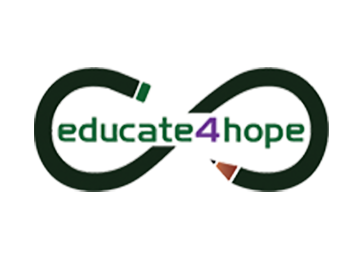Personalized Learning - It's On Like Donkey Kong
There are several misconceptions surrounding the move toward more personalized learning, with many considering personalized learning the new “buzz term” in education. Not only do some not know what it means or looks like — many who think they do, have it all wrong! The reality is, in a truly personalized model, there is a complete paradigm shift for both educators and students. This shift is student-centered in a way where students are active partners in designing some, or all, aspects of their learning environment and targets. Let me be clear - teachers facilitate the learning aligned to the standards, and students control when, where, how and even why they learn what they learn. We have heard this all before, right? However, with authentic personalized learning, the expectation of learning remains constant for every student. However, time, place, access, and assessment of and for learning are variable. Personalization can take place in any type of school or programs don’t let anyone tell you otherwise.
My staff and I work toward more personalization everyday in our non-traditional, blended, flex model program. Our program operates in such a way that students work at their own pace toward mastery. Our shift to master personalization means that our teachers now strategically work toward developing their skills of personalizing their content to maximize student success. As a result of our tireless reflective efforts, we have learned that personalization creates excitement for learning from students that were often apathetic previously. Attendance for students has risen as those who typically struggled to get to school, are showing up. But, most importantly, they make consistent progress, as evidence by our rising number of graduates and their hope for their future. Additionally, I learned that my staff has become more excited as they share success story after success story!
Let’s get real, it is practically impossible to fully personalize every aspect of a traditional students roster, in a traditional classroom. It would be impossible to manage even at our small school. But, let’s consider this as we continue to continue in our efforts to do our very best for students:
Heard of the new Every Student Succeeds Act (ESSA) Legislation passed by President Obama in December 2015? Well, it requires more personalized environments Title IV of this new law contains significant new statutory authority for state and districts relative to blended and personalized learning. Further, approximately 60% of grant funds (approximately $900 million) can be used for personalized and blended learning opportunities. In addition to several other requirements, districts will be required to examine “access to personalized learning experiences supported by technology”. Each school and district that applies for the Title IV monies will need to complete a needs assessment. In the needs assessment there is “expected to be a greater emphasis on quality personalized learning.”
20% of K-12 and 15% of Post Secondary Schools currently personalize learning with many more looking to join the movement, according to a survey conducted by the CDE 2015. So, the argument that colleges aren’t moving in this direction is false.
Being reflective of where you are relative to personalization and the gaps that exist to where you want to go, is critical.
If your staff aren’t developed and included in the creation of what personalization means in your school, you might as well not do it!
Still think this personalized learning mumbo jumbo is going away? Earlier this year in January, Mark Zuckerman, the founder of Facebook , and his wife, Prescilla Chanannounced that part of the 45 Billion Chan Zuckerbery Initiative will go toward funding moving personalized learning forward. This announcement has started interesting conversations mostly revolving around what some consider “throwing money” at a non-research based best practice.
The banter is that students will be learning only what they want and consequently, will be unable to deal with difficulties, and ill prepared to deal, adjust, cope and navigate “general” problems and information they may need in life. Perhaps this is because folks do not fully understand what personalized learning is. I will tell you what it is not: it is not putting students in front of a computer allowing students to move through goals of “digitized standardized learning.” It is not a tool to replace teachers. Personalized learning opportunities are simply opportunities to motivate and aspire to be empowering, personalize learning opportunities create opportunities for teachers to spend more time engaging students who need the individualized attention, forgoing the rote memorization and recall, low level questioning techniques which are bad for everyone.
The role of the teacher has shifted from the good ole “sage on the stage” to the “guide on the side.”
I say, we are currently preparing students for careers/jobs that do not exist yet, and more than likely for multiple careers/jobs that do not exist. We need to prepare our students to be globally competitive, self regulate and obtain information that is pertinent, timely and get and use that information swiftly. I do not see how we can prepare our students for these 21st century skills by our current education models. Personalized learning is not over-accommodating students, requiring students to learn less or differently than the expectation. It does not change the standard of learning or the bar of expectations — just the means for which a child can be motivated to reach and can exceed that bar.
With President Obama signing into Law the Every Student Succeeds Act (ESSA) in December 2015, all schools will be required to move toward more equitable, personalized learning settings. How that will be monitored and evaluated remains to be seen, so I suggest we ask ourselves as educational leaders: will you wait to be told how to realize personalization for every deserving student in your school/district and the means in which that is accomplished, monitored or evaluated? Or, are you ready to pave the way for others and become a model for which others to learn from?
